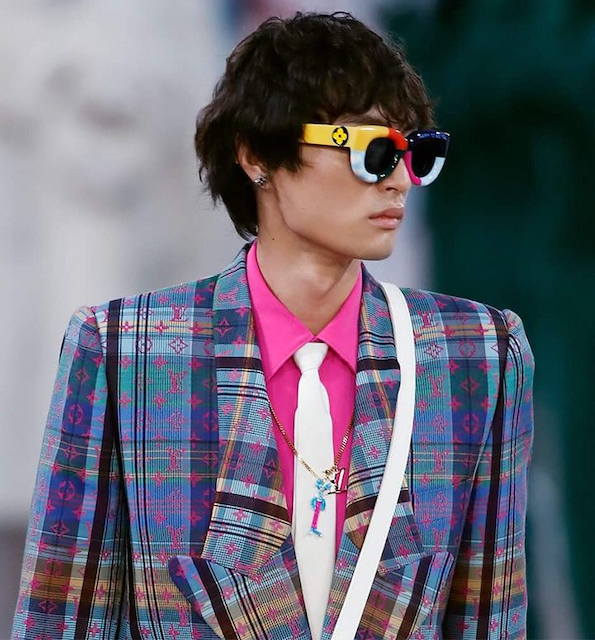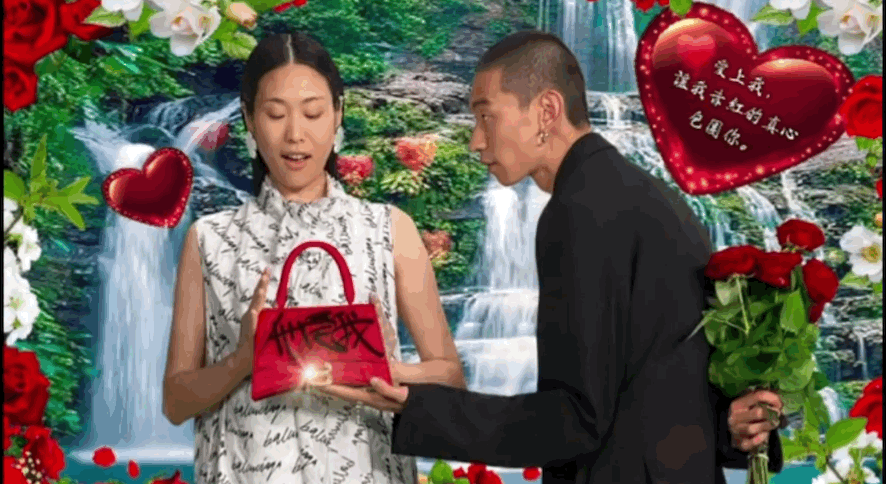Fashion during recessions tends to sober up and go quiet. With unemployment on the rise and social inequality worsening, even the rich and carefree theoretically want to hide their wealth. At least, that’s what happened after the 2008 economic crisis. In 2009, catwalk styles in the world's fashion capitals made a drastic shift away from shiny, early-2000s opulence and towards classic and solemn comfort. And although this rule of recession fashion has again reigned in the Western hemisphere thus far in 2020, it hasn't applied to China. In fact, the nation's fashion faithful are increasingly embracing a bonanza of boldness, excess, and style. This contrast has created an urgent dilemma for brands: Do they go bold to attract Chinese consumers or remain sober for Westerners?
According to “The True-Luxury Global Consumer Insight Survey,” which was conducted by the consultancy BCG in June, global fashion tastes have become increasingly polarized in these post-pandemic times. A preference for “extra” values in luxury increased by 14 percent for Chinese, while it dropped by 9 percent among Westerners. The survey showed that fashionistas in Western countries were returning to more traditional values like craftsmanship and timeless qualities or aesthetics. Meanwhile, their Chinese counterparts, who are younger and wealthier, tend to favor elements that portray extravagance, fun, and excess.
Beyond consumer surveys, China's maximalist fashion sensibility was also on display at recent big-ticket events. In August, the #LVMenSS21 Show in Shanghai showed a wickedly colorful and over-the-top parade. From suits with cartoon motifs to sunglasses with daring designs, Louis Vuitton's artistic director Virgil Abloh presented items that were more likely to get likes on social media than get a daily wearing. A few days later, Balenciaga launched a Qixi (Chinese Valentine’s Day) campaign that mimicked China’s trendy and Gen Z-friendly “too cool” aesthetic via handbags emblazoned with the graffiti-style slogans like “I love you/I love me/He loves me.” Both of these moves were proof of the current market's demand for provocative styles rather than plain classics.

But China's current appetite for “loud” fashion resonates very little in the Western world and is even being seen as culturally scandalous. In an interview with CNBC, the global chief learning and culture officer at the consultancy Interbrand Group, Rebecca Robins, said that we've seen “the resurgence of quiet luxury and understatement, as evidenced in the more timeless aesthetics of brands such as Hermès, Prada, and Bottega Veneta.” That’s because, in the West, there’s a widespread, underlying sentiment that flaunting conspicuous purchases during an economic downturn is seen as being “tone-deaf.” Instead, the Western media prefers using language such as “slow,” “ethical,” or “sustainable” fashion to appeal to a distressed public.

Behind these polarized values underlie the very different mainstream narratives of the pandemic in these two societies, which led to people's distinct worldviews. In the West, the youth generally sees the pandemic and its devastating socio-economic consequences as a collapse of system: it is an inequality crisis transformed into a generational misfortune. Meanwhile, the lessons that a young Chinese drew from the crisis are very different. Many expressed a renewed faith in the Chinese government and heightened confidence in China's collectivist social structures. According to BCG's June survey, Chinese nationals are the most optimistic consumer group among all respondents, with 77 percent expressing the belief in rapid social recovery after the crisis compared to the 43 percent average.
The nation's insular informational environment, exemplified by the Great Fire Wall, has also filtered out socio-political discourses outside of China to its citizens, leaving most unaware of the global cultural currents. In the Chinese narrative, the country's post-COVID19 reality is more equitable, positive, and hopeful than the deeply disturbed West. This narrative has resulted in not only higher consumer confidence among its citizens, but also their self-perceptions. As a survey by the wealth research firm Altiant reveals, over a third of the wealthy consumers in France, the UK, and the US confessed, “this pandemic made me question my consumption of luxury goods.” In China, only 16 percent felt the same way.
Still confident and proud, China's fashion community has valid reasons to pursue shiny clothes. But according to @流行色YC, a senior fashion editor with nearly 310k followers on Weibo, this preference stems from the country's relatively short engagement with fashion. “The COVID-19 crisis aside, China's fashion development is still at an early, immature stage,” he said. He pointed out that in a mature market such as Japan, different styles would coexist, while even the niche brand could find its supporter community. “Chinese customers prefer extravagant and fun pieces because people have a relatively 'weak' understanding of fashion. Designs made for individual enjoyment, rather than enjoyment of the others, clearly do not have the edge to win in China's competitive social media landscape,” he continued.
Balancing China’s quest for opulence and the West’s calls for discretion will be the next big challenge for global luxury houses. Making up more than half of the world's luxury consumption by 2025, Chinese consumers have already transformed the industry by forcing brands to adapt to their digital norms. Now brands need to adapt stylistically, as well.
Susanna Nicoletti, a senior marketing executive and the lecturer at Istituto Marangoni, told Jing Daily that the fashion world would inevitably adapt to China's extravagant taste because of business pressure. She describes the Chinese market as a “honey trap” that drives the industry's business and imposes future risks. “Most brands will have to craft products and customer experiences focusing on Chinese customers and to neglect Western customers,” she said. “But even in this case, the risk to become subjugated to a specific target will be very high. Brands will give up on creativity and adopt 'reactivity,' producing what is sellable to a specific target with a bottom-up approach instead of being the trendsetter, as it was in the past.”
While it’s still uncertain how the pandemic will unfold and impact luxury, one trend is clear: As polarization continues to define socio-political narratives in the West and China, global fashion tastes will become more divisive. And, given how the business has shifted toward Chinese consumers, adhering to the Eurocentric beauty standard might not be the answer to brands’ aesthetic questions anymore.

